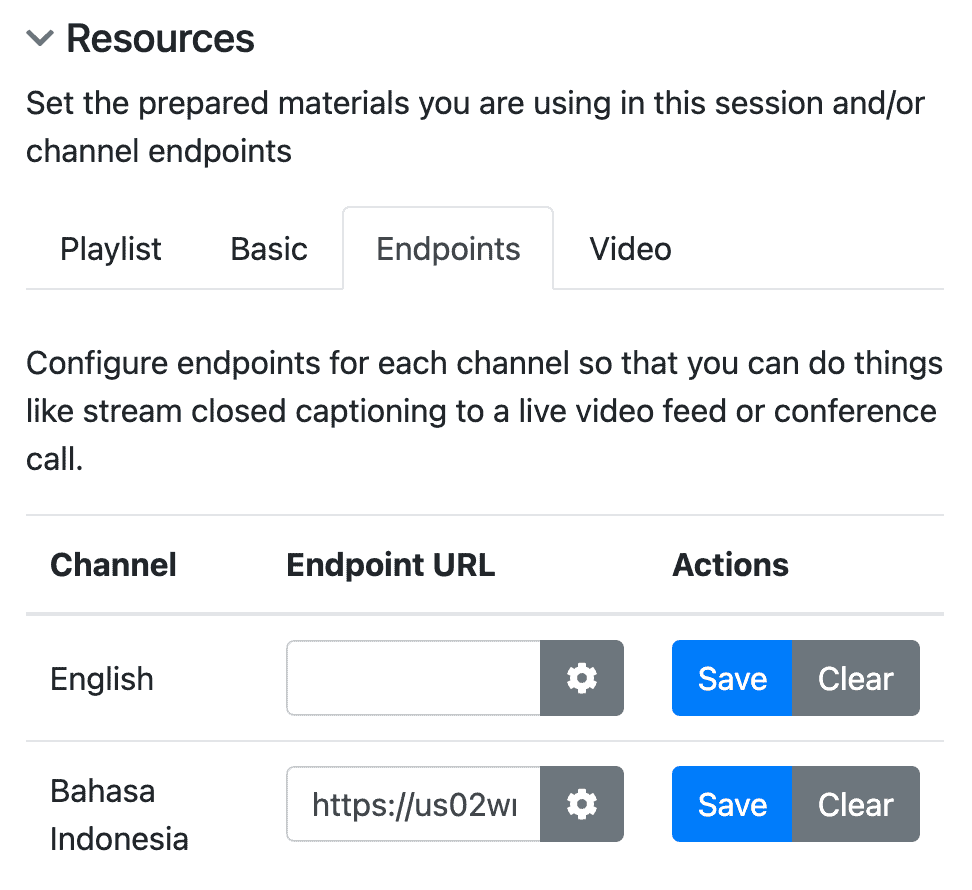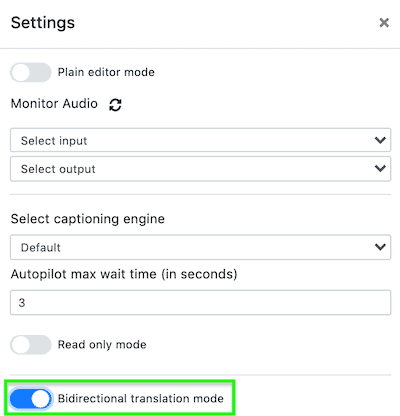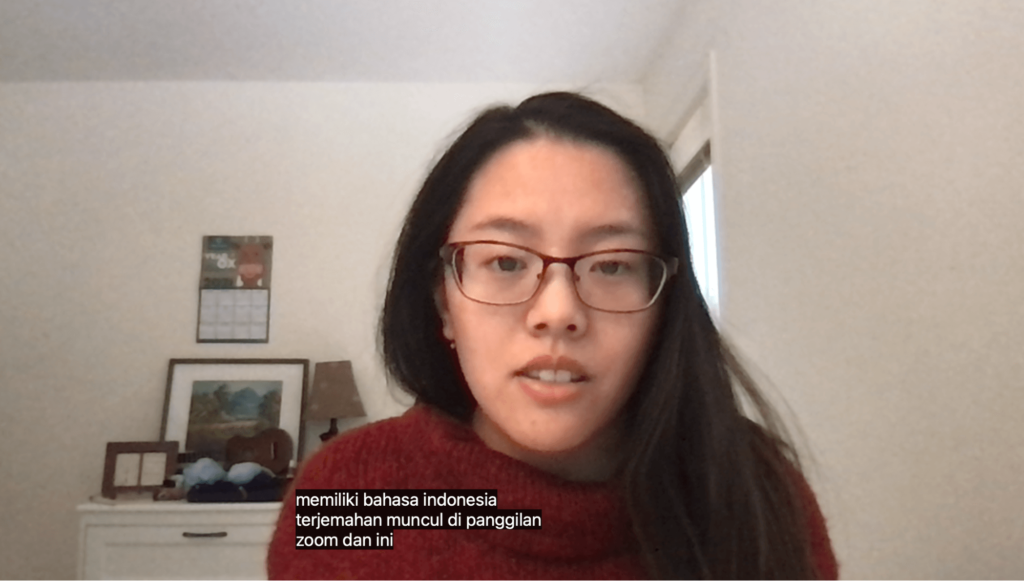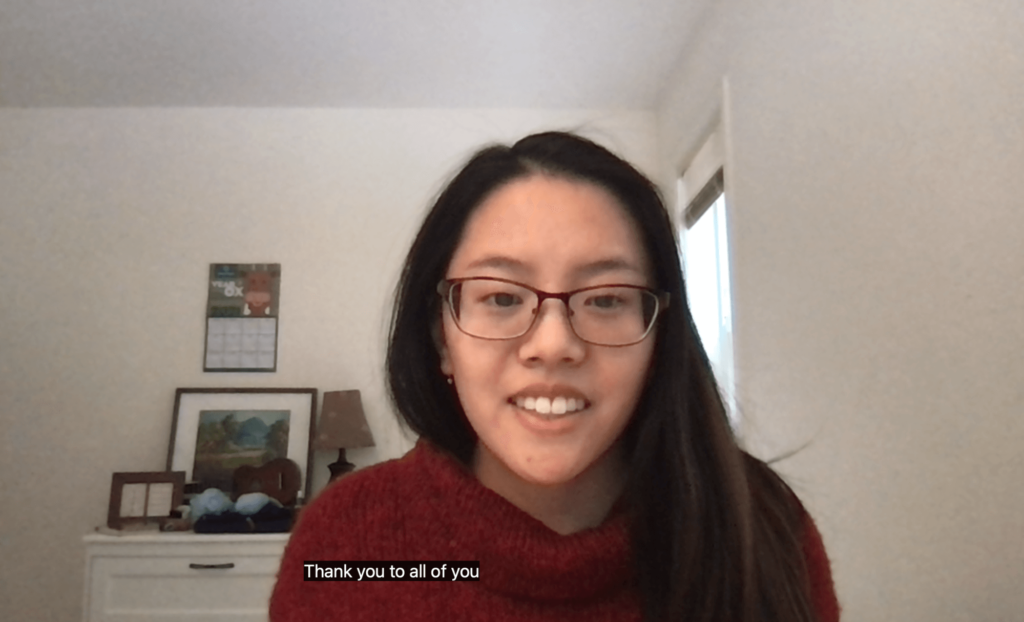Spf.io now supports bidirectional translation in Zoom! This means you can support two languages speaking in your meeting, and you can show the translation of the spoken language in the bottom third of the screen. Here’s how to set it up.
Note that this currently only works when there are two languages selected, it cannot support three or more at this time. Also, for situations where you want captions available in more than one language at the same time, consider spf.io’s Audience View.
Set this up with audio loopback of the Zoom meeting, so that everyone that speaks on the call is captioned and translated. And note–you can only have two languages enabled for this to work.
1. Get the Zoom caption API token from Zoom and paste it into the channel of the language you want to translate into.
For example, let’s say we have an English and Indonesian Zoom call, where the first language spoken is English. This means we initially want to display Indonesian in the Zoom captions. Therefore, we will put the API token into the Indonesian channel and save.

2. Enter the Operator view in the channel of the language spoken first.
Set it up for auto caption and translate with autopilot enabled. In our example, I will open the Operator view and select “English” as the spoken language in the language switcher.

3. Click on the gear icon and then enable “Bidirectional translation mode” so it will automatically switch your captions to display the opposite channel when switching languages.

4. Test by speaking in the first language and see the resulting translation appear in Zoom.
In our example, here I’m speaking English (EN is selected in the language switcher), and the Indonesian translation is appearing in Zoom.

5. Now, click on the language switcher to switch your input language to the other language.
In our example, I started with EN (English) selected. This second time, I switched from EN to ID (Indonesian), which is now highlighted in the image below.

6. Now speak in the other language and see the translation in Zoom.
After clicking the language switcher, I am now speaking in Indonesian. Since I have “Bidirectional translation mode” turned on, the English translation now appears in Zoom.

As you can see, in this example, the bidirectional language switcher only displays translated captions, or subtitles. This setup is perfect for meetings and events where two languages are being spoken, and you only want the opposite language to be displayed. For example, a company could have an English-speaking team collaborating with a Spanish-speaking team.
During the meeting, when Spanish is spoken, Zoom will display spf.io’s English translation. When English is spoken, Zoom will display spf.io’s Spanish translation in the captions. Note that you will need to click the language switcher whenever the spoken language changes to set the correct input language for your meeting.
